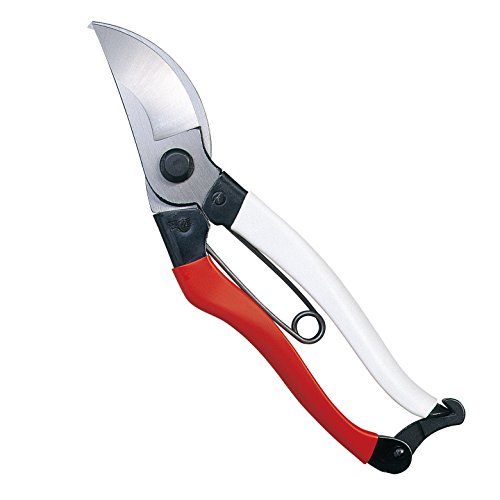Prune these plants in July before it is too late – 7 flowers and shrubs you must trim now before the midsummer pruning window ends
After many years working as a professional gardener, these are my go-to plants to prune in July, for a thriving yard in the year ahead
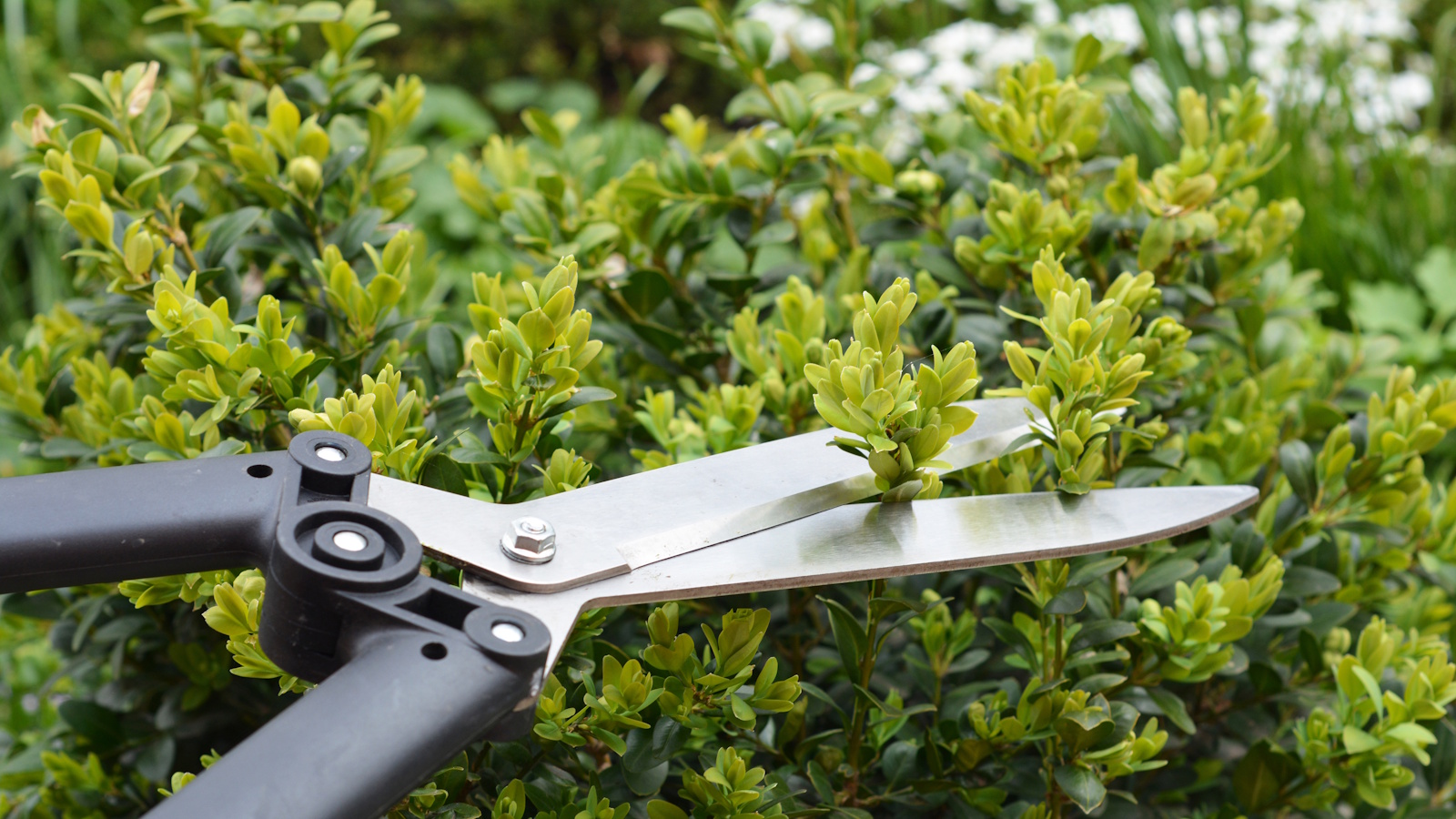

I’ve pruned a lot of plants in my time as a gardener. Some I had to tackle from atop a wobbly ladder, and at least once I had to take shears with me in a cherry picker, to confront a rather unmanageable wisteria. Through all of these experiences, one thing I have come to understand is that timing is crucial.
July pruning really matters. But, importantly, this month is not the time for a full garden chop-back (that’s for the dormant season during winter or early spring before everything kicks off), but, instead, this is the time for a quieter trim. A summer tidy, if you like. This is the moment for taming wayward stems, encouraging a second flush, and giving your plants a summer haircut.
So, from stately fruit trees to fragrant flowering shrubs, here are seven plants to prune in July that should be added to your summer gardening checklist.
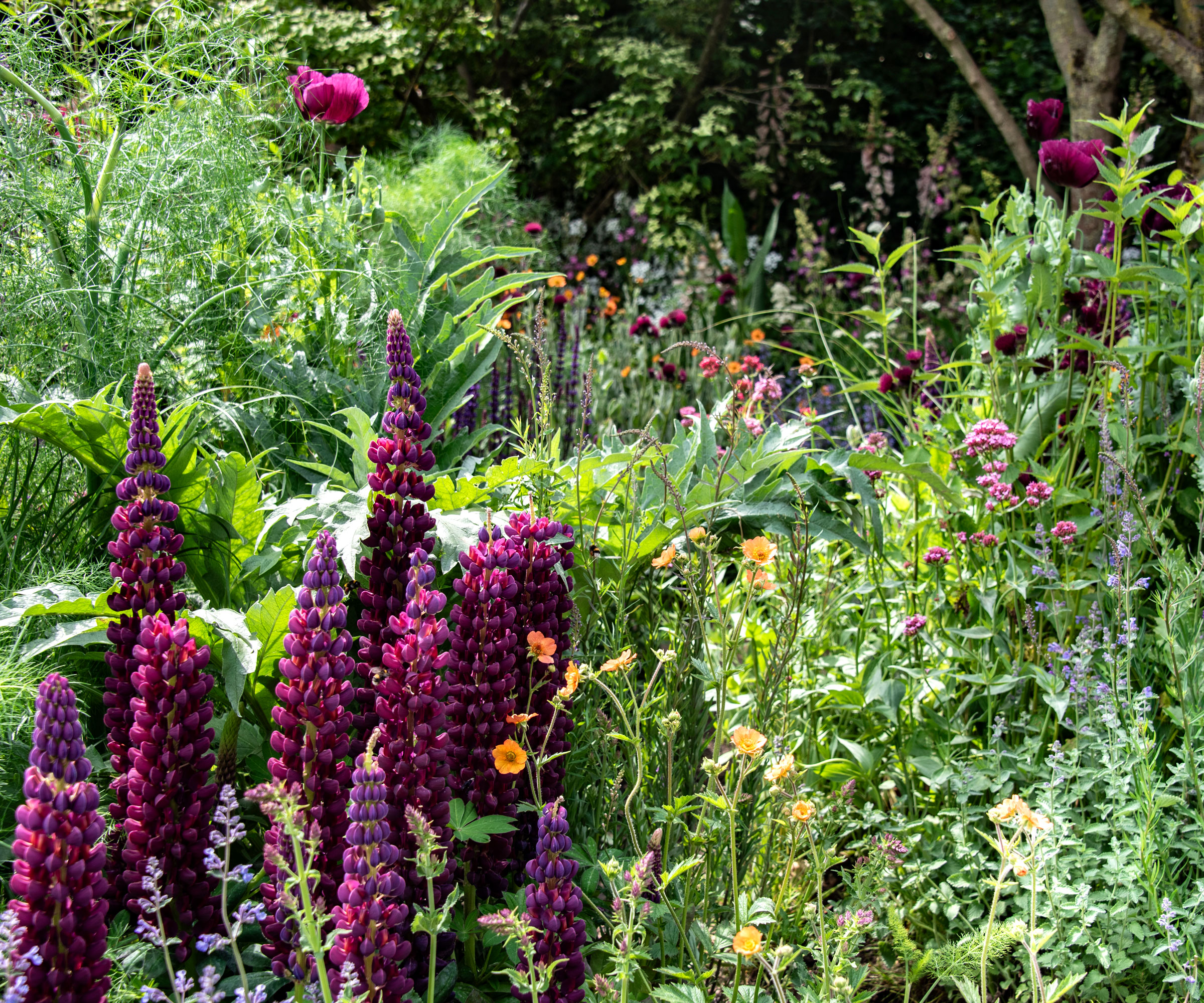
7 plants to prune in July before it is too late
Pick your moment to prune wisely this month to avoid any pruning mistakes. Right now, both the US and UK are facing blistering heat waves, and if it's a scorching day (with temperatures above 80°F/ 26°C), step away from the pruners and delay your trimming. Pruning when it is too hot can cause real damage to the plant.
Regardless of where you live and your US hardiness zone, chances are, July will be a hot month. But, it is important to wait for a cool morning or an overcast afternoon, which will be easier on both your plants and on you.
It's also worth knowing that not all plants respond well to a summer trim. There are many plants not to prune in summer to be aware of, including hydrangeas and hibiscus.
But, the following species? These are the seven plants to prune in July that I know will benefit from a good tidy right now.
Design expertise in your inbox – from inspiring decorating ideas and beautiful celebrity homes to practical gardening advice and shopping round-ups.
1. Lilac
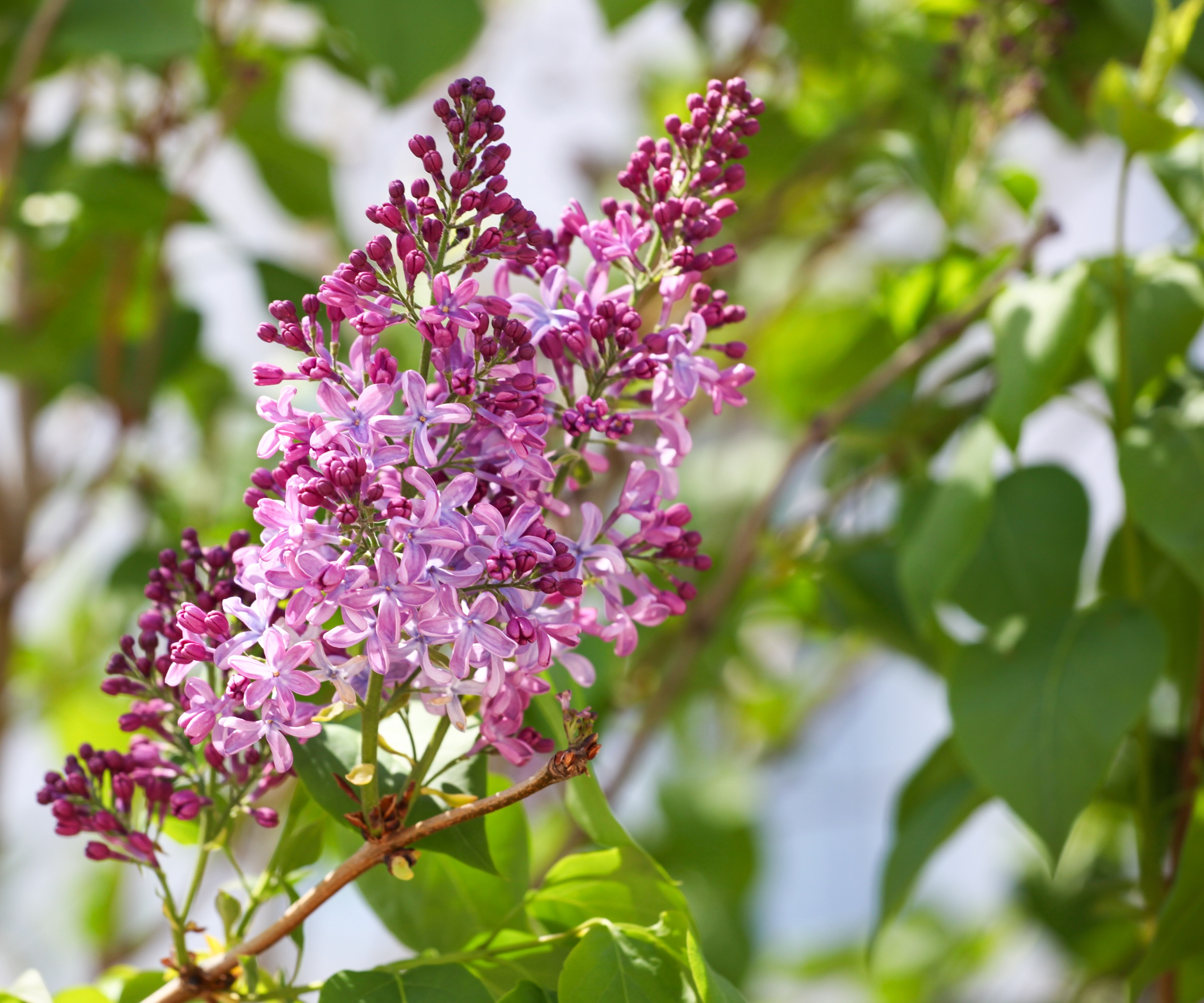
I have cared for many lilac shrubs in my time gardening, and getting their maintenance right is important. After all, you wouldn't want to sacrifice any fragrant flowers in the following spring, would you?
In terms of when to prune lilac, these are spring-flowering shrubs, so they are good plants to trim after blooms look a little sad and have turned brown in summer.
They flower on old wood (or the previous year's growth), so really, early July is your last chance to trim.
If you are pretty happy with how your lilac looks, and the shape and density of your shrub seem fine, you might just need to lightly cut back the spent flowers, which will prevent your lilac from wasting energy on seed production.
If you need to thin your lilac, carefully remove some of the oldest stems, using a pruning saw to cut down to a healthy joint, which will help to open up the centre.
Use something like this highly rated Fiskars pruning saw, available via Amazon, which is far preferable to trying (and failing) to cut larger stems and branches with small pruners.
2. Californian lilac
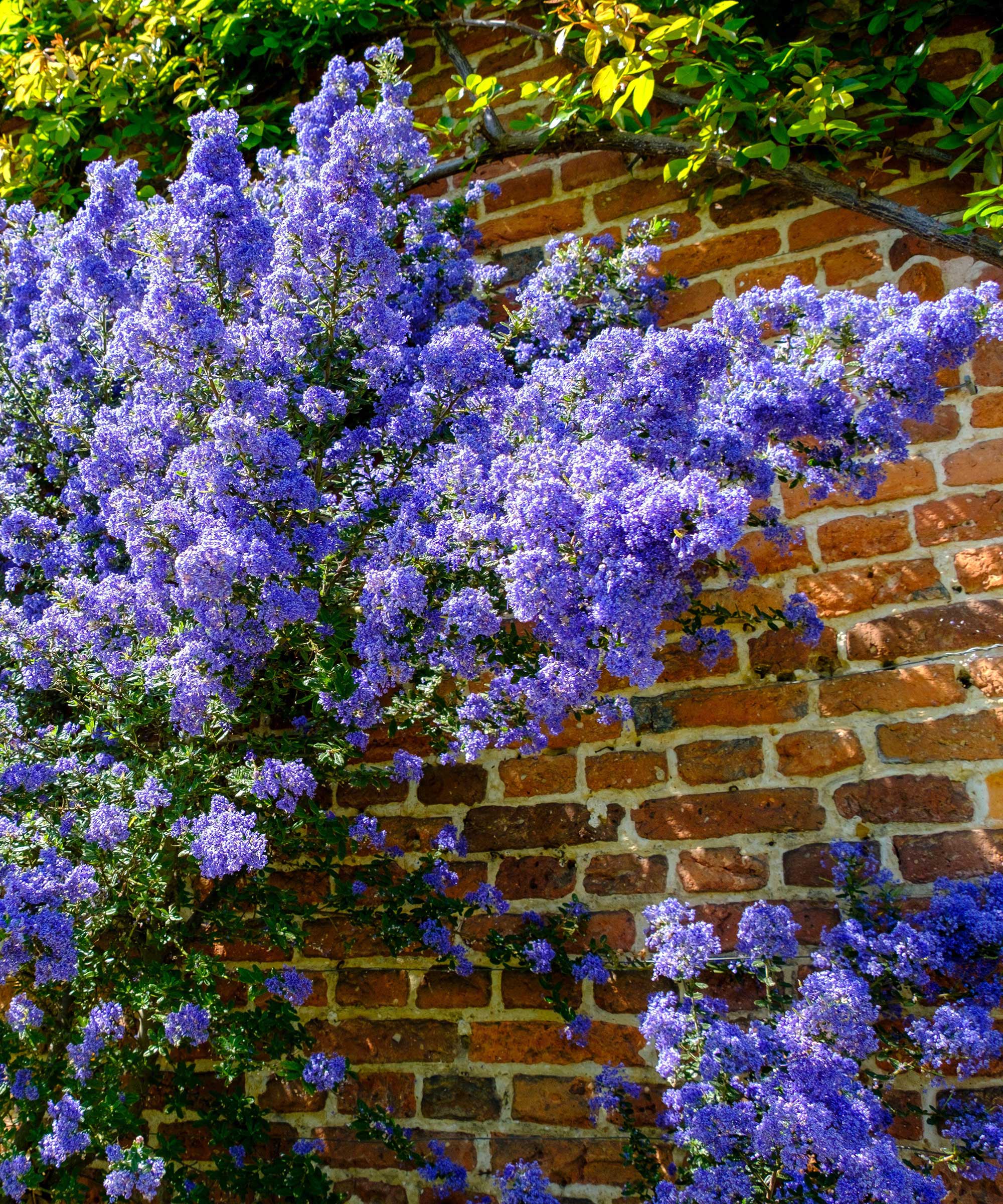
California lilacs are some of the best flowering shrubs for full sun and will provide year-round interest in mild regions, including zone 8 and zone 9.
I've grown them in tricky dry beds and watched them thrive during long, hot summers without any help needed.
While they are beautiful, California lilacs, or Ceanothus spp., can get a bit scraggly, or a little leggy, especially after a few years of unchecked growth.
So, in terms of how and when to prune shrubs, simply remove a few inches of green growth in July. It is that simple, and doing so will keep your plant compact and in good health.
A word of warning: just don’t prune into old wood, as Ceanothus spp. can sulk or die back if cut too hard.
These Berry & Bird wooden pruners, available from Amazon, should get the job done without any challenge, and with an attractive wooden handle, will add that heritage feel to your garden shed.
3. Honeysuckle
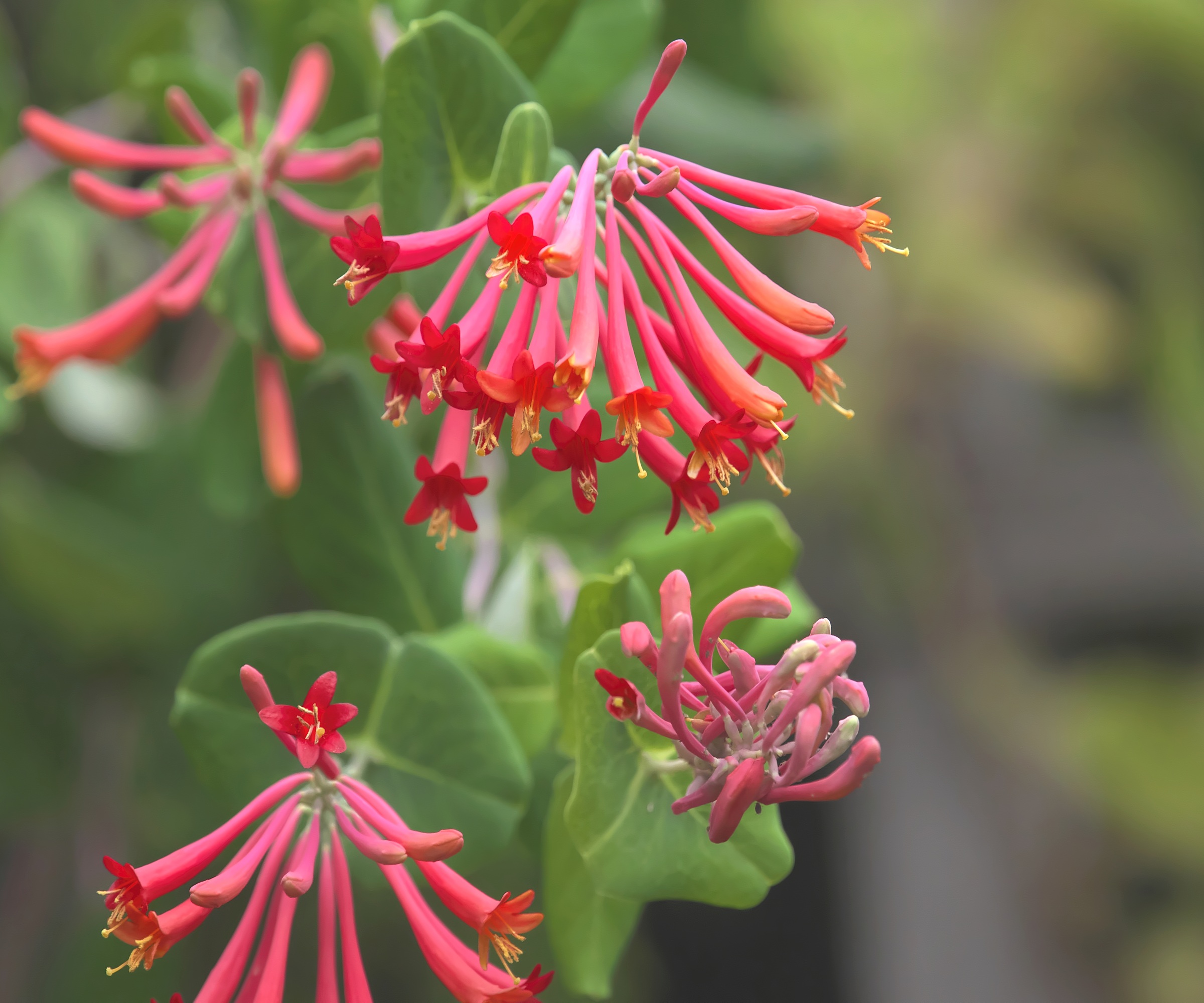
In terms of when to prune honeysuckle, these are climbing plants to prune in June and July, once the flowers have faded.
This is not the case for all species, however, as some varieties of honeysuckle will still be in flower this month. If yours is still going strong, hold off pruning until the blooms are finished.
Prune any whippy stems to two or three leaf buds from the main framework, and snip away any dead or dying branches that have few leaves (and should be easy to spot).
If the base is getting woody and bare, cut one or two older stems down low to encourage new growth from below.
You can learn how to propagate honeysuckle in summer, if your plant is looking like it has seen better days. Or, alternatively, why not invest in a new vine?
For a native plant, why not grow coral honeysuckle, or Lonicera sempervirens, which does best from zone 4 plus and tolerates a range of soils and lighting situations.
Live coral honeysuckle plants are available from Amazon and will fill vertical surfaces with masses of fragrant peach-orange flowers for years to come.
4. Philadelphus
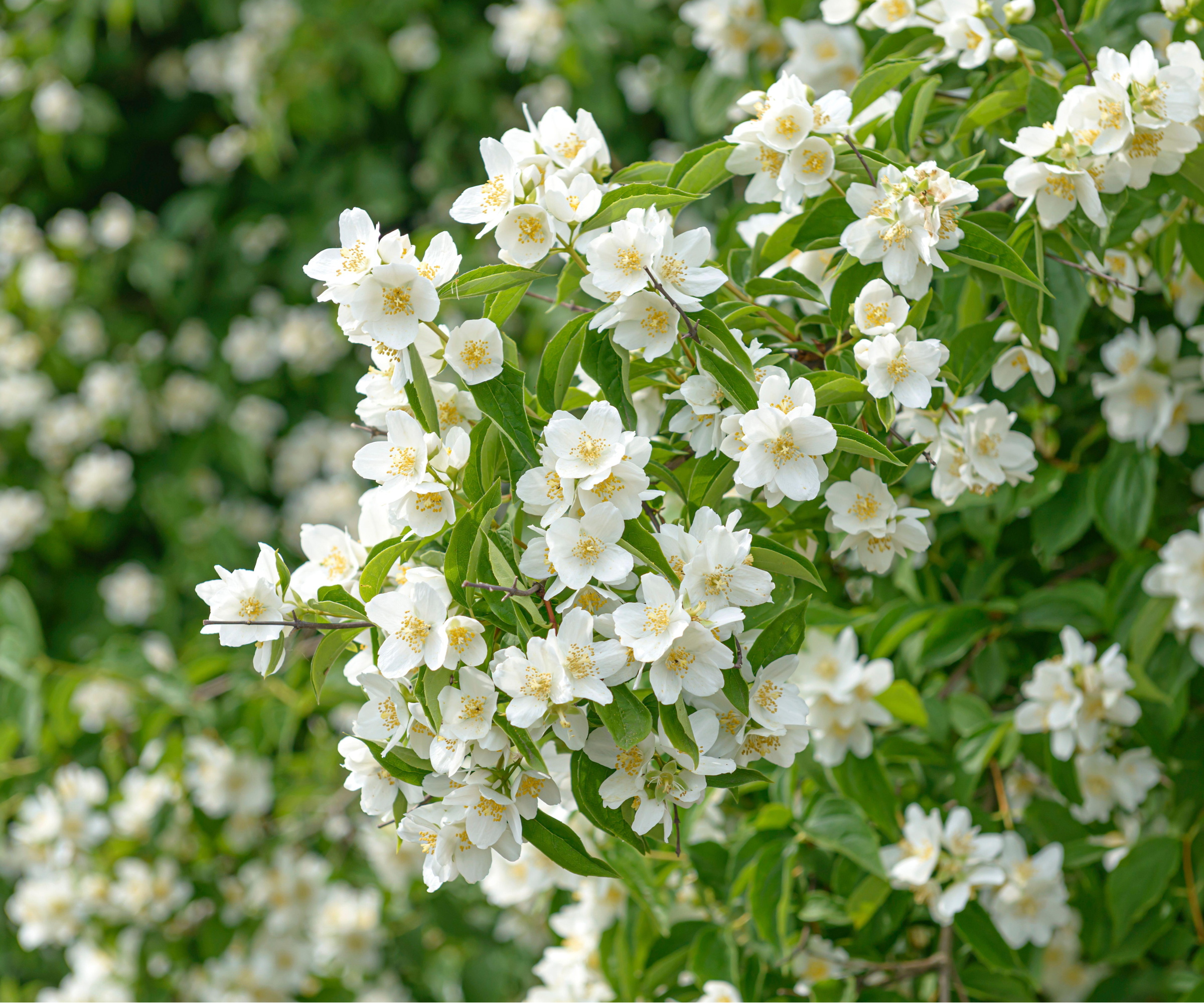
Immediately after flowering is the right time to prune mock oranges, or Philadelphus spp..
This, of course, will vary depending on where you live and the variety you grow, but July is usually a safe time to reach for the loppers.
The goal with mock orange pruning is to keep these tough shrubs in a nice shape, with good bushy growth, while also encouraging strong flowering stems next year. You don't need to trim masses, just enough to keep the shrub in good form.
However, there are many different mock orange varieties, and some smaller varieties won't generally need much trimming, if any.
Take this 'Snow White Sensation' mock orange, live plants available from Nature Hills, which grows no taller than four feet, and would only require a light prune.
These Felco high-performance pruners, available from Walmart, will make light work of any mock orange maintenance you need to do, and also have a useful red handle, making them easy to spot if you drop them in the border.
5. Snowball bush
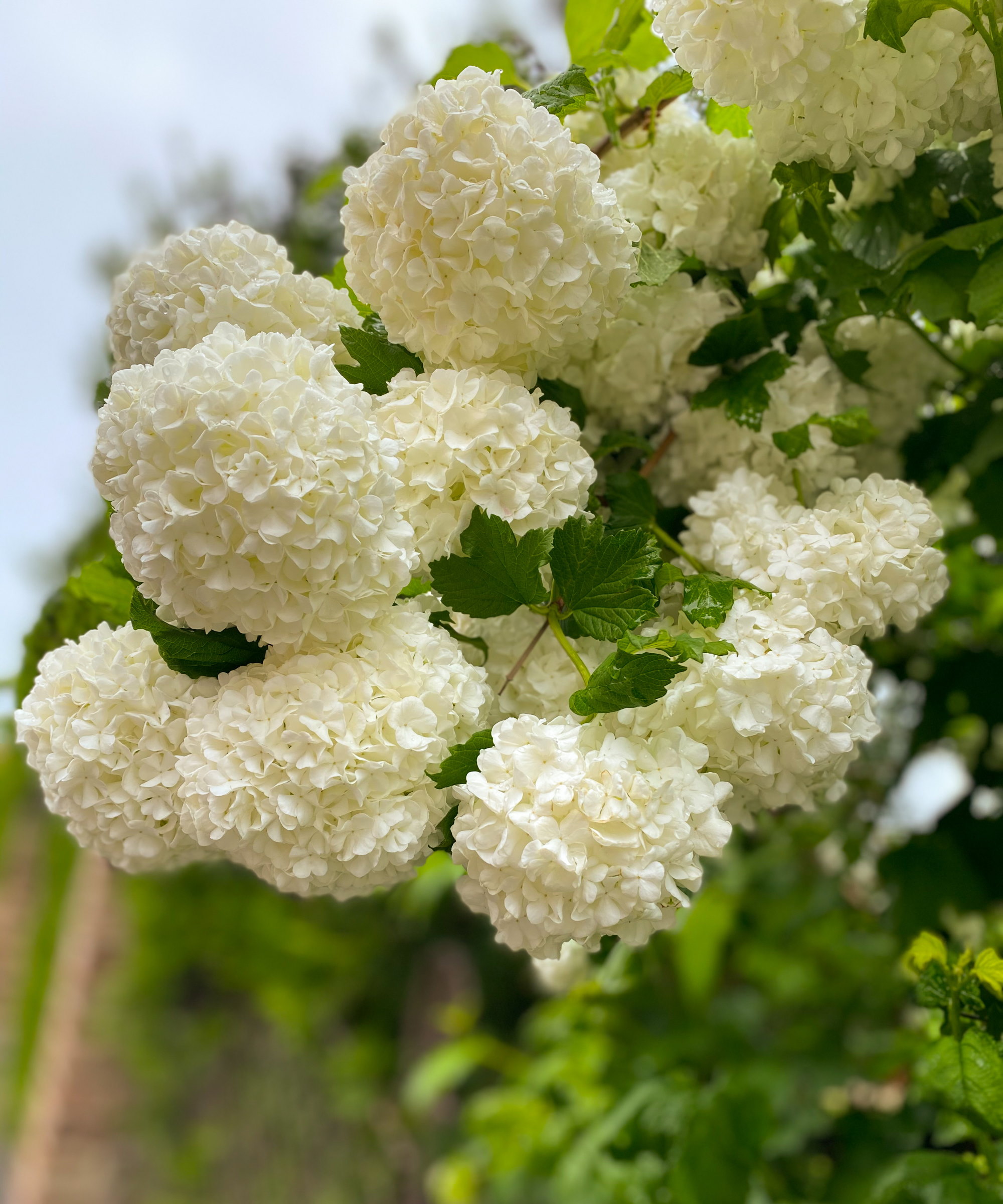
In May and June, the branches of snowball viburnums are typically heavy with large, white pom-pom flowers. Once these blooms have finished, usually around late June and July, it is a good time to prune your snowball bush.
If your viburnum shrub is in good shape and relatively compact, all you need to do is a spot of deadheading, cutting any flowerheads off using your pruners.
However, snowball bushes are one of those shrubs that are prone to looking top-heavy and a little unruly if left without pruning for too long.
Indeed, without maintenance, they can reach up to 12 or even 15 feet, which may be a little too big in a smaller space.
So, little and often is a good approach to keep your shrub tidy and compact, but hold off on any hard pruning (rejuvenation pruning is best done in late winter or early spring).
6. Cherry trees
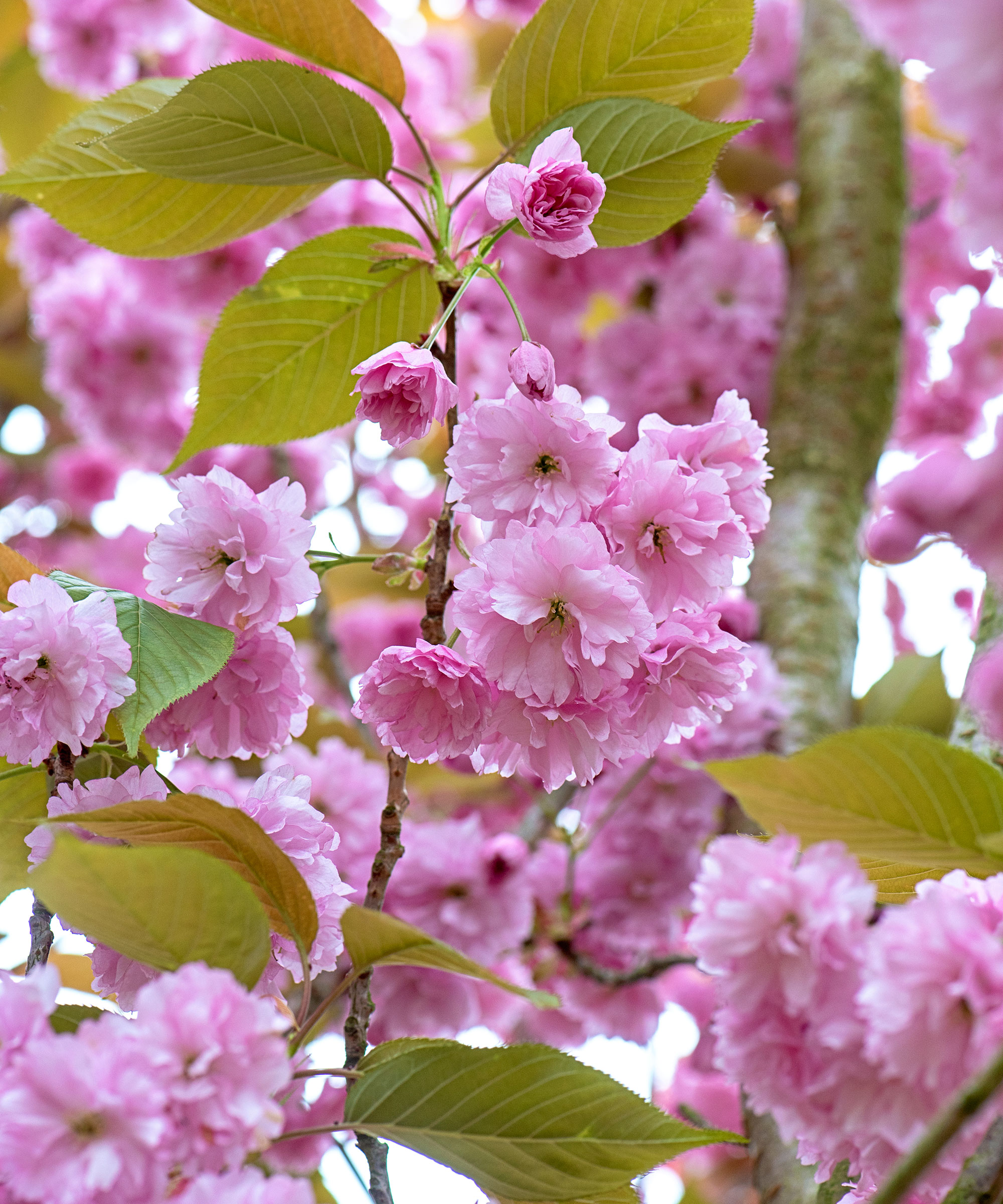
Summer is the best time to prune flowering cherry trees. The reason for this is that cherries, or Prunus spp., are rather vulnerable to disease if pruning is done in fall or winter.
So, to avoid any run-in with bacterial canker, or any other cold-weather disease or problem for that matter, give your flowering cherry trees in pots or borders a trim during July.
Simply remove any dead, damaged, or crossing branches to allow air and light to access the crown of the tree.
For thicker branches, use something like these heavy-duty loppers from Fiskars, available online now at Amazon.
If you’ve got a young cherry tree, this is also the time to train it into its desired structure. Identify which stems are the ones you want to encourage in the years ahead, and gently support or stake as the young tree grows.
7. Deutzia
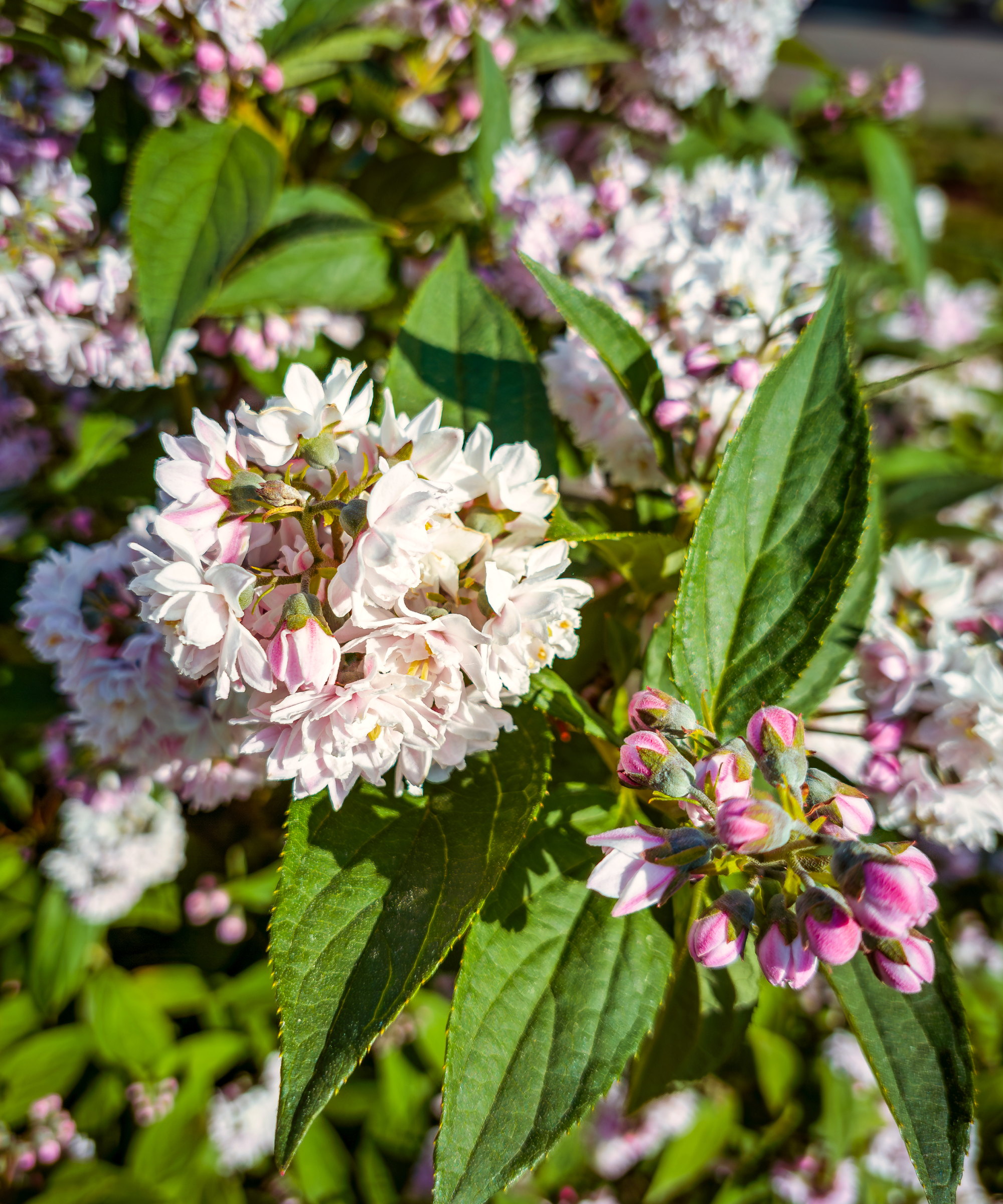
Deutzia is one of those shrubs that quietly steals the show in late spring, with frothy white flowers that look great as patio plants.
In my experience, by June and July, they have usually finished flowering and are ready for a small haircut.
These popular shrubs flower on old wood produced during the previous summer, so timely trimming in early July will give your deutzia plenty of time to produce new growth.
Follow the one-third pruning rule, cutting back the flowering stems by about a third to promote lots of new growth.
Whatever pruning tools you are using, be sure to keep them clean and sharp, which will make the job ten times more efficient.
There are many sharpening stones available online, and for a small investment, your tools will remain in tip-top trimming condition.
Try something like this Okatsune sharpening stone, available via Amazon, which is remarkably easy to use and highly rated.
Shop pruning accessories

Thomas is a Content Editor within the Gardens Team at Homes and Gardens. He has worked as a professional gardener for both public spaces and private estates, specializing in productive gardening, growing food and flowers. Trained in Horticulture at the Garden Museum, he has written on gardening and garden history for various publications, including The English Garden, Gardens Illustrated, Hortus, The London Gardener and Bloom. He has co-authored a Lonely Planet travel book, The Tree Atlas, due out in 2024.
You must confirm your public display name before commenting
Please logout and then login again, you will then be prompted to enter your display name.
